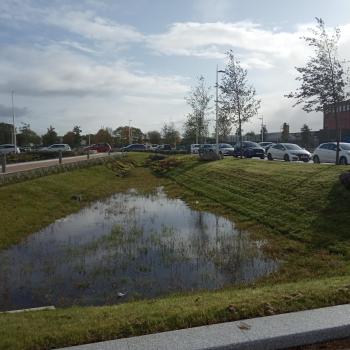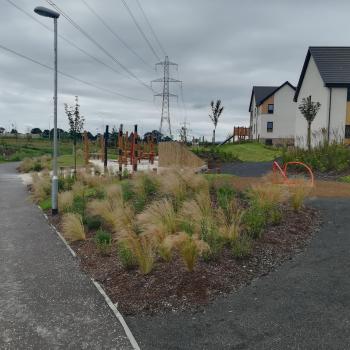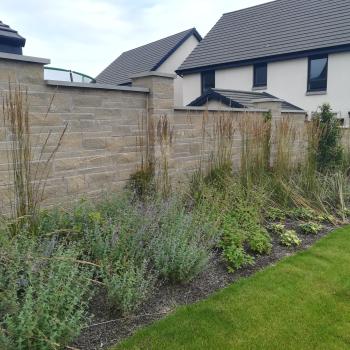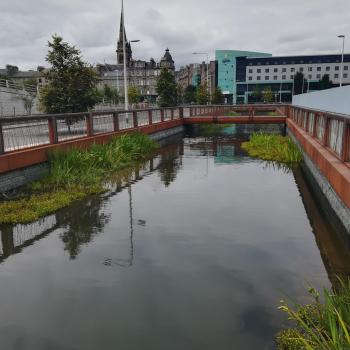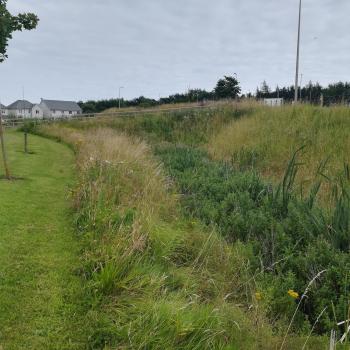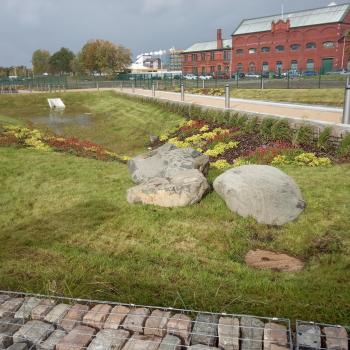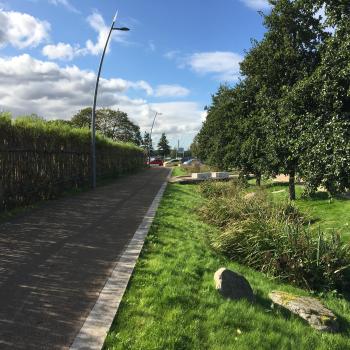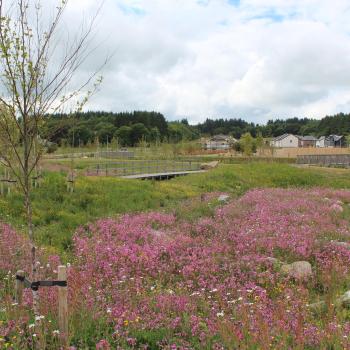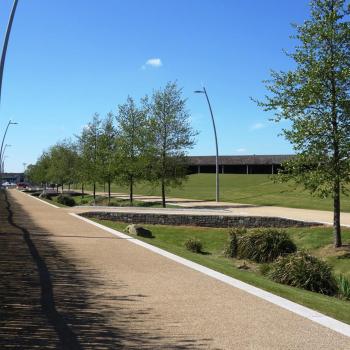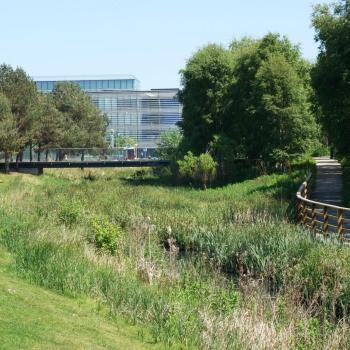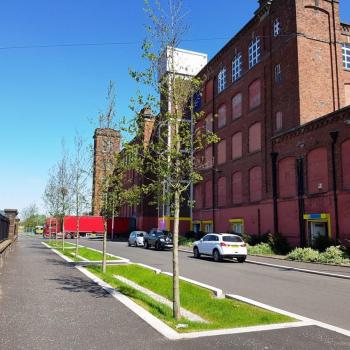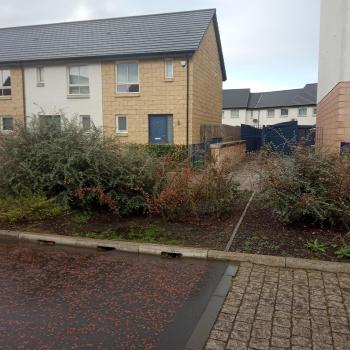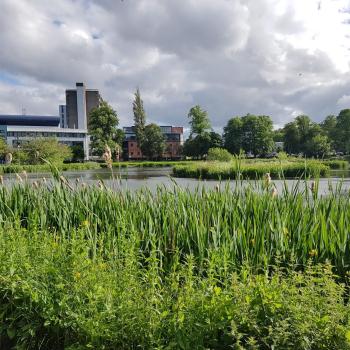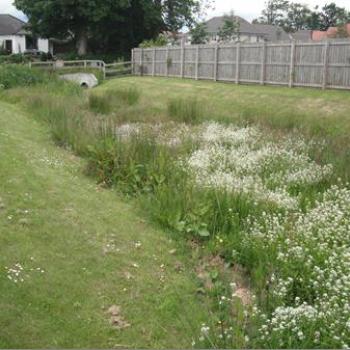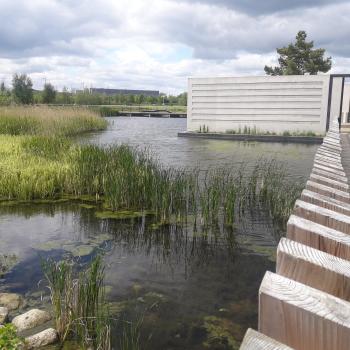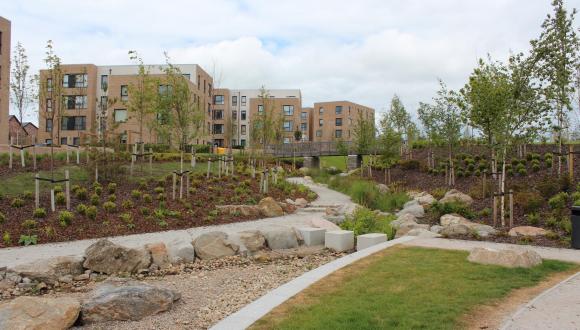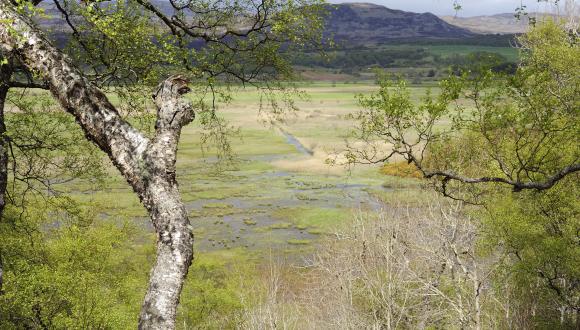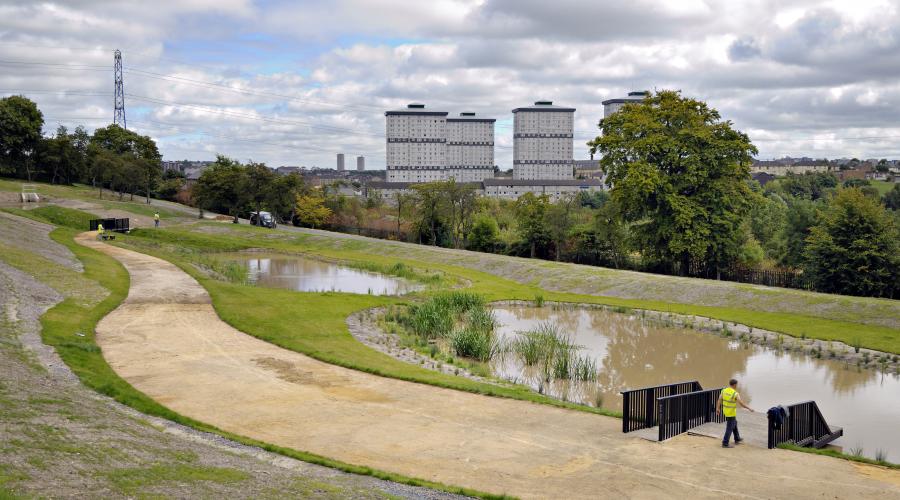
Sustainable Drainage Systems (SuDS)
Designing good sustainable urban drainage systems can reduce flooding and help biodiversity in urban areas.
Sustainable Drainage Systems (SuDS) refer to drainage systems that manage surface water that take into account water quantity and quality (flooding and pollution) as well as biodiversity and amenity.
SuDS use natural elements to typically manage rainfall close to where it falls. They are designed to;
- Transport (convey) surface water
- Slowdown runoff (attenuate) before it enters watercourses
- Provide areas to store water in natural contours, allowing water to soak (infiltrate) into the ground
- Allow water to be transpired through vegetation (evapotranspiration)
SuDS can include a number of different components, from large to small scale features, including:
- Wetlands: shallow ponds, wetlands and reed beds provide story attenuation, sediment settlement and pollutant removal.
- Swales: vegetated drainage channels or troughs with a shallow gradient to reduce flows provide storage, conveyance of surface water, infiltration and settlement of pollutants.
- Trees: trees can help surface water management trough transpiration, interception and filtration.
- Permeable pavements: pavements and hard surfaces that allow infiltration or temporary water storage.
- Soakaways: excavated pits providing better infiltration, storm-water attenuation and groundwater recharge.
- Rain gardens or filter strips: vegetated strips which accept runoff providing vegetative filtering, settlement of particulate pollutants and infiltration.
- Green roofs and living walls: vegetated roofs and walls of buildings that reduce runoff and peak flows.
More information and guidance:
Susdrain provide a range of resources for those involved in delivering SuDs and water-sensitive urban design.
Metropolitan Glasgow Strategic Drainage Partnership have useful information on what everyone can do to help reduce flooding, from individual homeowners, to Local Authorities and Developers.
SEPA guidance on the general requirement for new surface water drainage systems to pass through SuDS.















